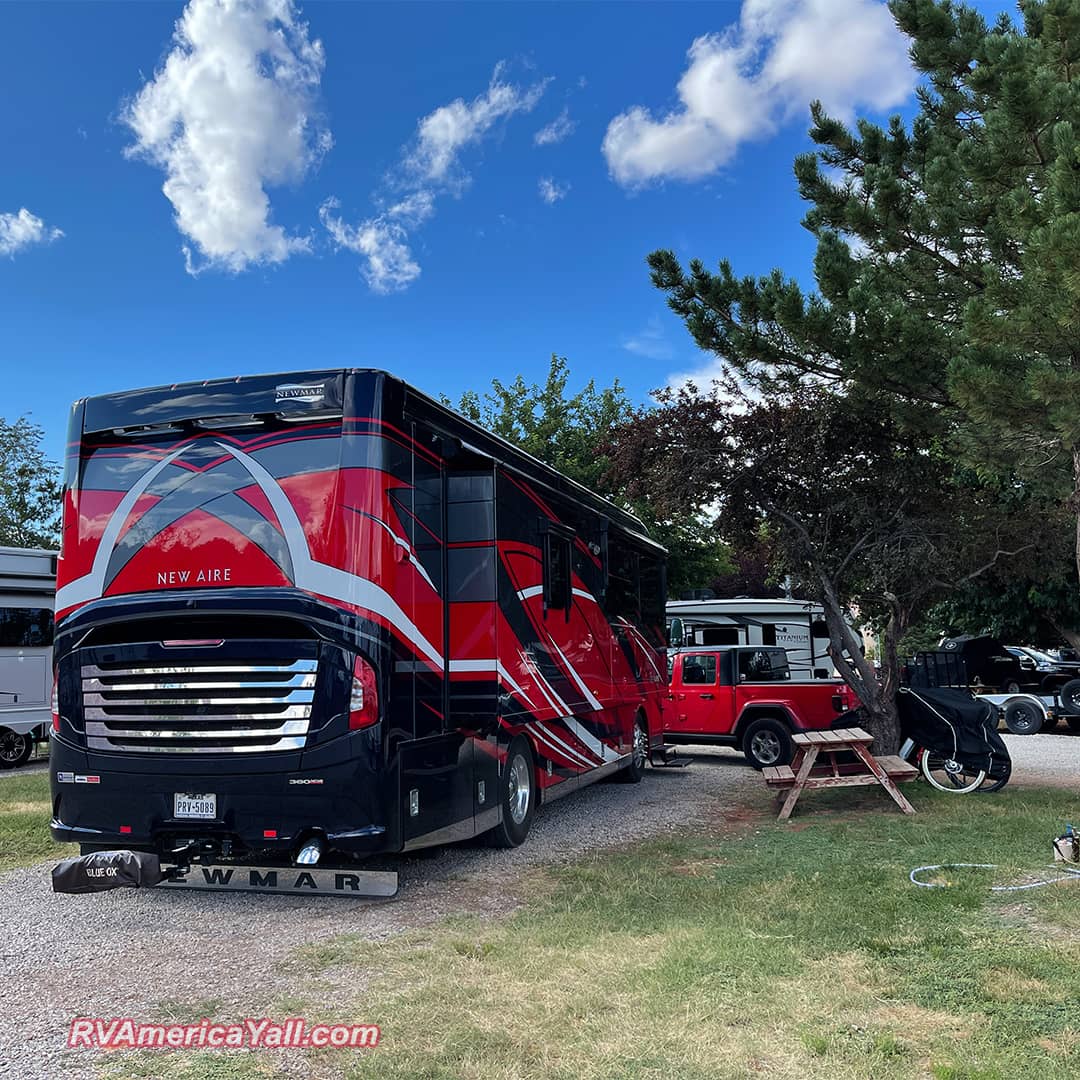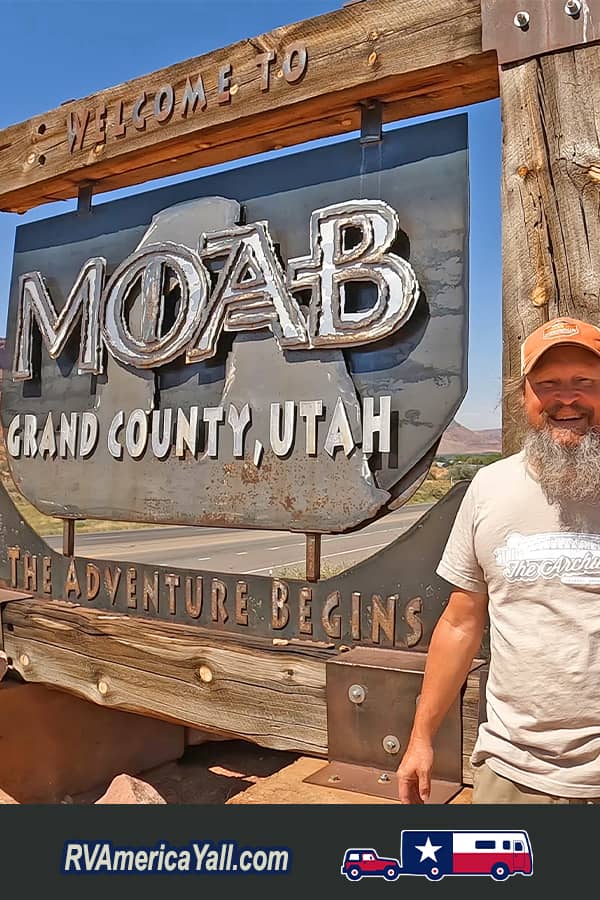Most everyone we know visits Moab, Utah (or has it on their bucket list to visit) because of the town's location next to two major National Parks: Arches National Park and Canyonlands National Park. But is a visit to Moab ONLY about the National Parks? Or is there more to do here? That was our question when we arrived in Moab for a two-week stay.
Before we get into our full discussion on things to do in Moab, we should share a little background on this visit. This was not our first stop in Moab, but it was our first visit. We stayed in Moab for one night back in 2019 as we headed back to Texas from Idaho. Unfortunately, we didn't have time to explore or do anything in Moab on that one-night stay. But we knew then that this was a place we definitely needed to return to.
So when we scheduled our travels for this leg of our adventures, we scheduled a full two weeks in Moab between our stays in Fruita, Colorado and Cortez, Colorado. (Yes, Moab UTAH is a great connector between two COLORADO towns!) Our original plans for this visit to Moab had us dry camping for a full week in the Devils Garden Campground inside Arches National Park followed by a second week in an RV park in Moab to explore the town and Canyonlands National Park. (Our motorhome is too big to camp inside Canyonlands National Park.)
We initially changed our plans while we were in Fruita, Colorado. The forecasted temperatures for our first few days in Moab were expected to be around 106 degrees. Due to the extreme temperatures, we changed our reservations for the first several days of our Moab adventure to an RV park with 50amp electrical service, planning to move to our campsite inside Arches National Park when the weather cooled down. But once we arrived in Moab, we realized that there was so much to do beyond visiting the National Parks. So we changed our reservations again to stay in RV parks in Moab throughout our stay.
We'll have more on our visit to incredible Arches National Park and all of the guided tours that we enjoyed during our time in Moab in future posts. But first, let's talk about all of the other fun stuff we found to do in Moab.
Things to Do in Moab, Utah
Take a Guided Tour: Off-Roading, Horseback Riding, so many options! Check next week's post for our review of 5 Guided Tours in Moab!
Enjoy the endless opportunities for outdoor adventures.
Free Things to Do in Moab
Search for ancient petroglyphs and pictographs (location guides are sold at the Visitor Center).
Explore the interesting shops, art galleries and restaurants along Main Street in Downtown Moab.
Ride your bike along the 2.5 mile paved path from the parking lot at Lions Park across the Moab Riverway Bridge and along the Moab Canyon Pathway.
Learn about the movie history of this area at the FREE Moab Museum of Film and Western Heritage, located at the very scenic Red Cliffs Lodge.
Enjoy a scenic drive...
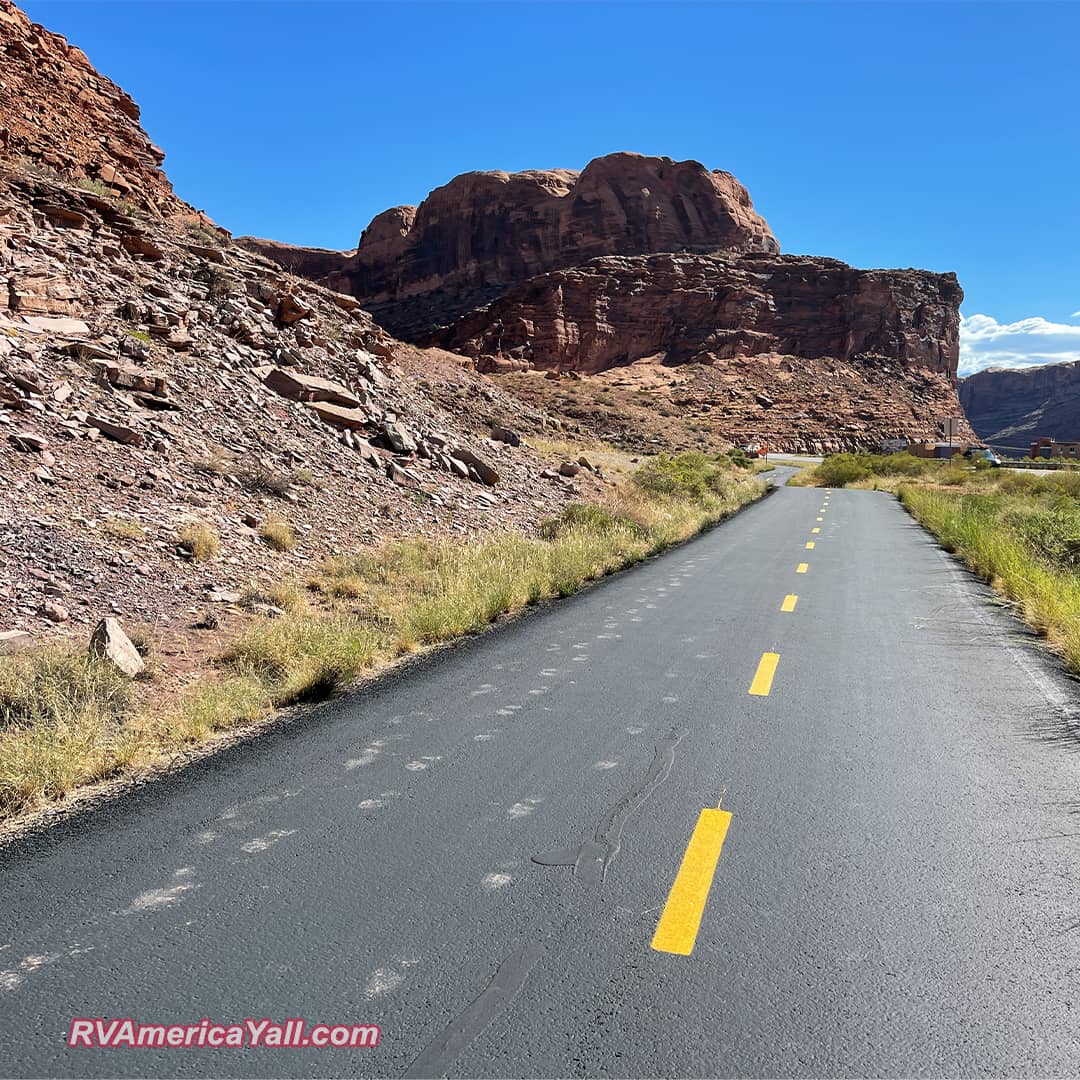
Moab Canyon Pathway
Scenic Drives Near Moab, Utah
In our opinion, much like neighboring Colorado, the entire Moab area is one big scenic drive. But specifically, the Moab area is home to 3 Utah State Scenic Byways:
- the 17-mile Potash-Lower Colorado River Scenic Byway - Utah 279. Look for historic rock art, rock climbers and dinosaur tracks along the route.
- the 35-mile Dead Horse Point Mesa Scenic Byway - Utah 313. Look for hairpin curves, scenic vistas and amazing red rock canyons. This route takes you to Dead Horse Point State Park and Canyonlands National Park.
- the 44-mile Upper Colorado River Scenic Byway - Utah 128. Look for views of the Colorado River, Grandstaff Canyon, amazing red rocks and the La Sal Mountains. This area has been home to many movie sets over the years.
For more information on these scenic byways, visit the Scenic Byways Page of the Discover Moab website.
Places to Eat in Moab, Utah
There are a lot of unique options for dining in Moab. We enjoyed several of these during our stay and plan to visit the others on a future visit.
Tips for Visiting Moab UT
Start at the Moab Visitor Center located on Main Street. They have a huge collection of visitor information, a short movie, a gift shop, and a large selection of books to provide tips and ideas on local outdoor recreation, hiking trails, tips for mountain bikers, Jeep, ATV and off-road vehicle trails, and everything else that makes Moab and the surrounding area a popular destination for outdoor enthusiasts. The Visitor Center is staffed by locals and park rangers from the national parks ready to share information and answer questions about the best hikes and other outdoor activities. Public restrooms are also available.
Adventure seekers may want to check out the Sand Flats Recreation Area, famous for its Slickrock Trail and Porcupine Rim Trail for experienced mountain bikers and 40 miles of off-road 4x4 trails.
Moab gets very hot during the summer months. We visited for 2 weeks in September, just after Labor Day. The first several days had temperatures of 100+ degrees, but by the end of our stay we were enjoying highs in the 80s. If you visit during warmer months, be prepared with plenty of water.
For views of the Colorado River from above, take a short hike from the Lions Park parking area to the Moab Riverway Bridge. This bike and pedestrian bridge is a great place to watch paddleboarders and kayakers on the mighty Colorado River as well as enjoy the views of the high red rock cliffs on either side.
The rock formations in this region are simply amazing. Everywhere you look you'll see breathtaking vistas and interesting scenery. While Arches National Park may be the most popular spot for seeing natural sandstone arches, we enjoyed discovering other arches as we explored the area.
Folks who enjoy scavenger hunts will enjoy searching for these additional rock arches as well as the ancient petroglyphs that are common in this area. Many of these are viewable with just a very short walk from your vehicle.
Some free city parking is available in a parking lot located a block off of Main Street off of W Center Street. You can also find parking at the Information Center.

Ancient Art is Everywhere Here
A Brief History of Moab
This region served as home to generations of Native Americans from a variety of cultures. Evidence of many of them can still be found in the fascinating petroglyphs and pictographs that can be seen all around the town.
During the 1700s, this area was traveled by explorers and traders as a crossing for the Colorado River. This river crossing became a formal route in 1830 as a part of the Old Spanish Trail that connected Santa Fe, New Mexico with Los Angeles, California.
The city that would eventually become Moab, Utah was originally founded as a Mormon mission in 1855. Conflicts with the local Ute residents caused the settlement to be abandoned after just a few months. The next arrival of settlers came in 1878 when pioneers arrived to develop fruit orchards and ranches. These fruit orchards would eventually help Moab gain attention as one of Utah's best producers of apples and peaches. In 1887, the Ute peoples were sent to reservations and this land in the Moab Valley became a permanent settlement for pioneers.
In the early days, this was a tough Wild West town, challenging to reach due to the topography of the river, mountains and canyons. It is said to have been a favorite hangout for outlaws in the 1880s, including Butch Cassidy. A ferry began operation in 1885 at the Colorado River crossing and the railroad came through 35 miles from town. The first steel bridge at the Colorado River crossing opened in 1912.
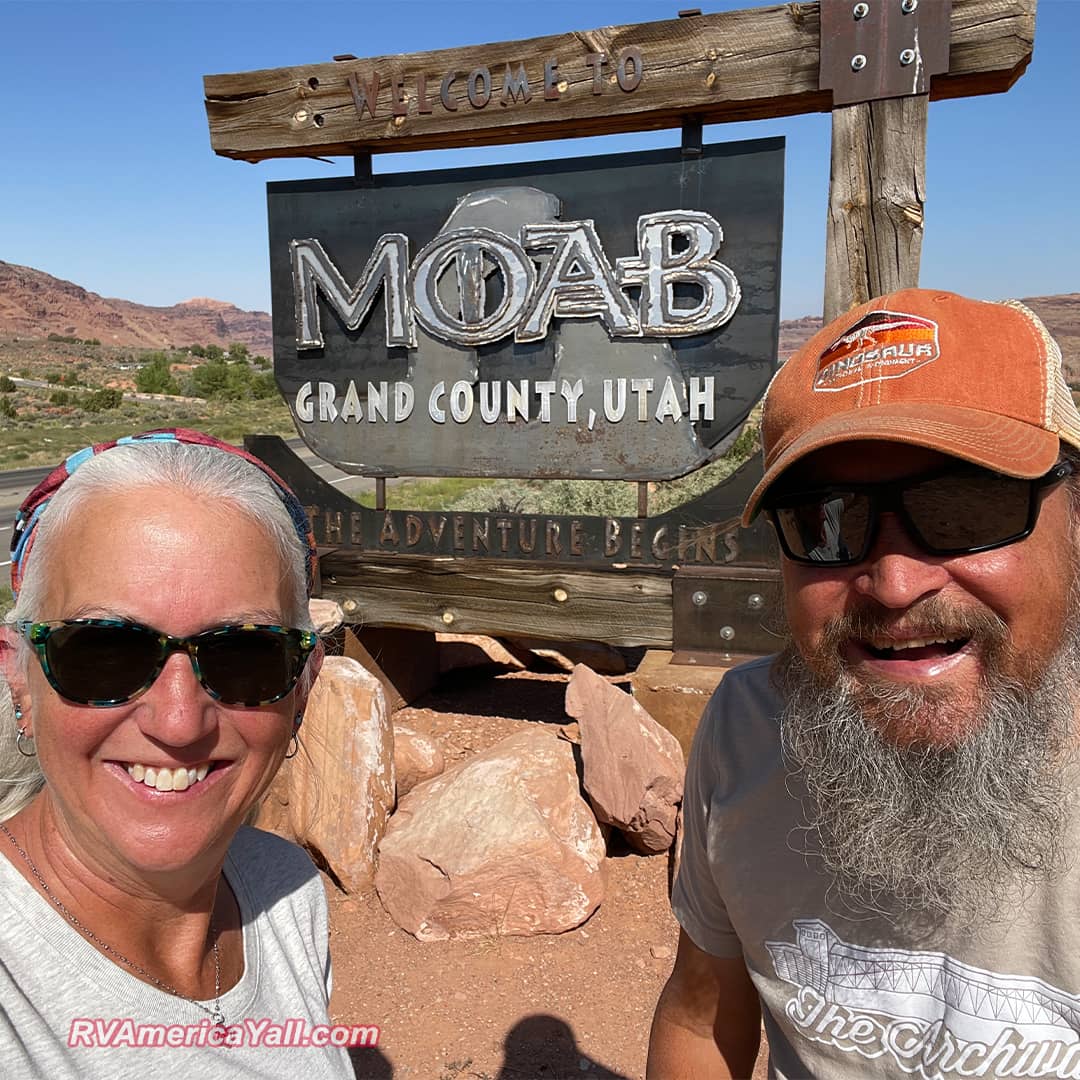
Visiting Moab UT
Coal mining opportunities attracted more settlers, but it was the uranium mining boom of the 1950s that brought in the nation's second largest uranium processing mill along with workers, and the need for more schools, stores, motels and businesses. Due to the Uranium boom, McCall's Magazine named Moab the "Richest Town in the USA" because their research showed that the town had "the highest percentage of millionaires of any town in the country". But, they said, you would never know it. You could not look around the town and see any signs of wealth. When that boom ended in 1960, Moab became a sleepy town, until it became a tourist mecca.
Moab's beginning in tourism came in the 1920s when what is now Arches National Park was designated as Arches National Monument. Canyonlands National Park added to the tourism attraction in the 1960s, followed by the recognition of amazing mountain biking trails, rock climbing and off-roading opportunities (some of which were old mining roads) in the 1980s. Today, somewhere between 3 million and 5 million people visit Moab each year! Keep in mind, this small town only has approximately 5,300 residents! Moab is truly a small town that doubles as a bucket list travel destination!
How Did Moab Get Its Name?
In 1880, as the settlement grew and the need for a post office arose, so did the need for an official name. One of the new residents, William Pierce, suggested the name Moab, based on the biblical Moab with a recorded similar climate. The name was approved and Pierce became Moab's first postmaster.
When Grand County was established in 1890, Moab was named the county seat. Grand County, by the way, was named for the Grand River that flowed through town. That river was later renamed the Colorado River.
Where is Moab, Utah?
You'll find Moab in Eastern Utah south of Interstate 70 on Highway 191. This region is part of the Canyon Lands section of the Colorado Plateau. It is the only Utah town on the Colorado River. (from here, the river flows through Canyonlands National Park and down to Lake Powell in Arizona.
Moab is also part of the 512-mile Utah/Colorado loop known as the Dinosaur Diamond Prehistoric Highway. Incredible Dinosaur National Monument is also part of this prehistoric highway in northeast Utah and northwest Colorado. Paleontologists have been studying this region for more than 100 years.
As we mentioned, we visited Moab on our travels between two Colorado towns: Fruita CO (101 miles to the northeast) and Cortez CO (114 miles to the southeast).
Our Basecamps for This Visit
As we mentioned in this video, Moab is a very popular travel destination. We highly recommend making your RV camping or lodging reservations as far in advance as possible. But if your plans change like ours did and you find yourself going to Moab without having made reservations months ahead of time, don't give up. We were able to stay in Moab for 2 full weeks by moving our RV to new campsites twice during those 14 nights.
Since this is such a popular tourist stop, there are a lot of options for lodging. There are several motels and resorts for non-RVers. And our RVing friends can choose from RV resorts, national park campgrounds, state park campgrounds, BLM campgrounds and dispersed camping on public lands.
For More Information on Visiting Moab, Utah
Visit the Discover Moab website by Grand County Economic Development or the Moab Information Center (Visitor Center) on Main Street in Moab.
Moab Utah Fun Facts
Approximate Population
5,317
Elevation
4,026'
Year Founded
About 1878 (named "Moab" approx 1880)
Average Summer Temperatures
58° - 100°
Average Winter Temperatures
20° - 52°
Geographic Area
4.8 square miles
A Few Photos from Our Visit to Moab

Searching for Dinosaur Tracks
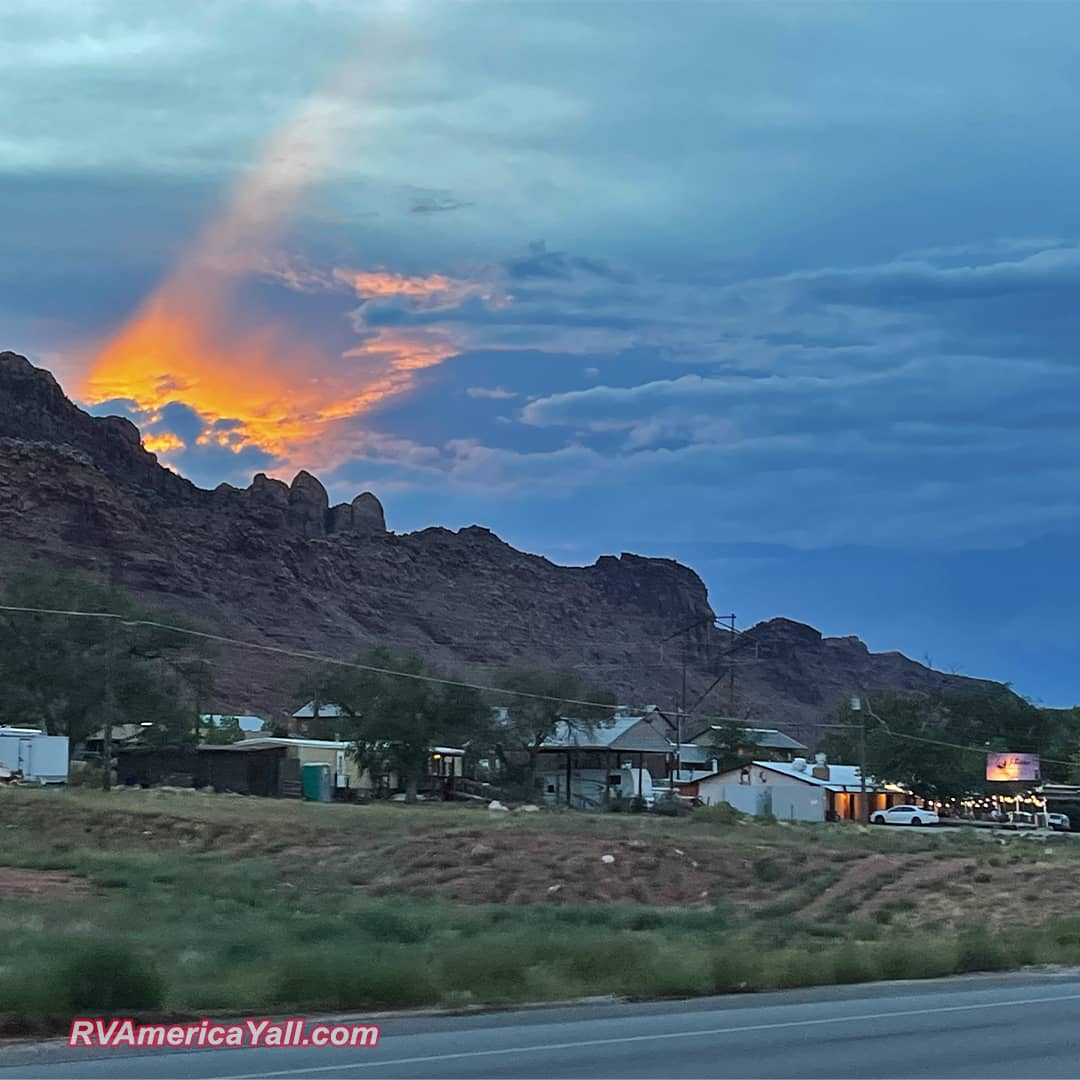
Moab Sunset
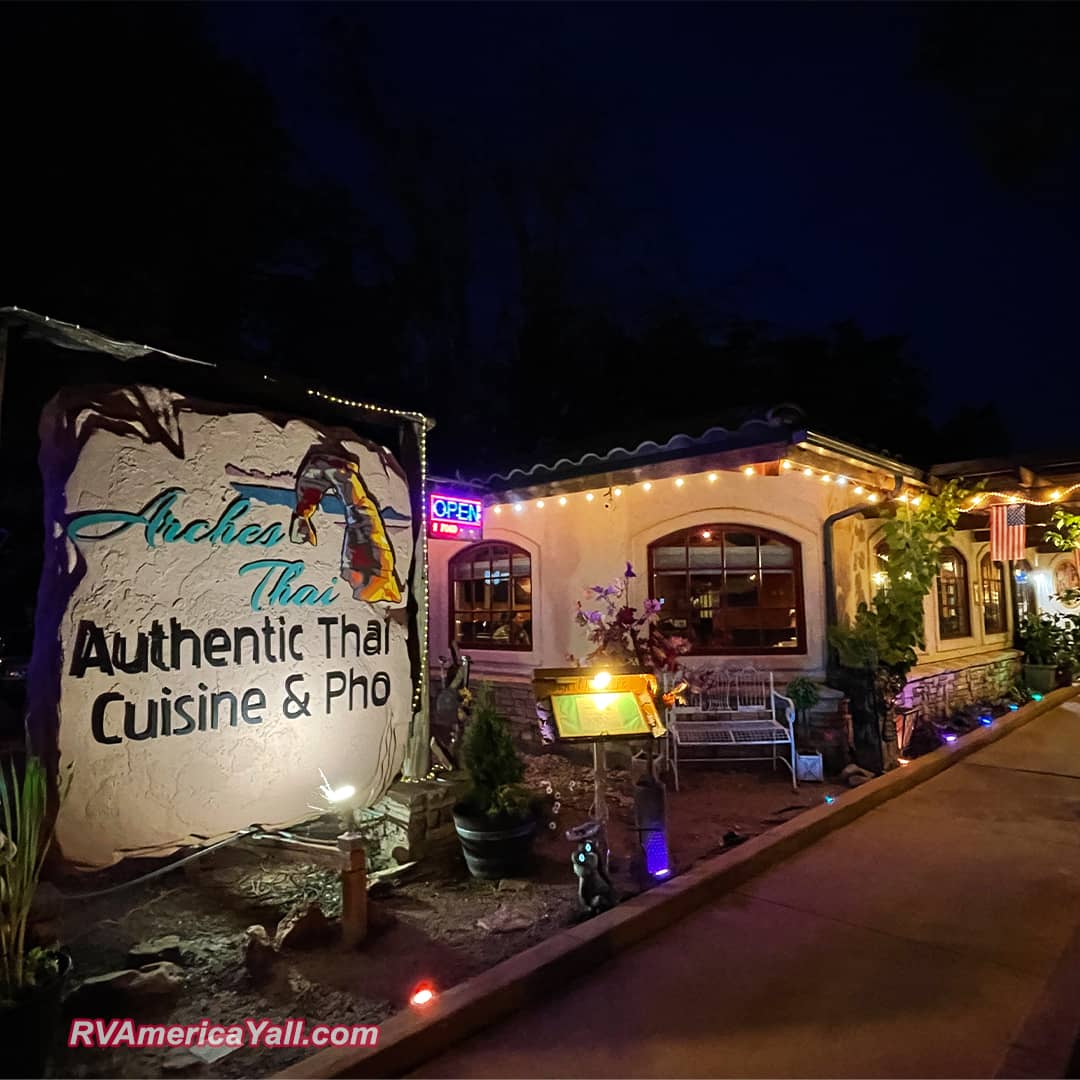
Arches Thai Restaurant
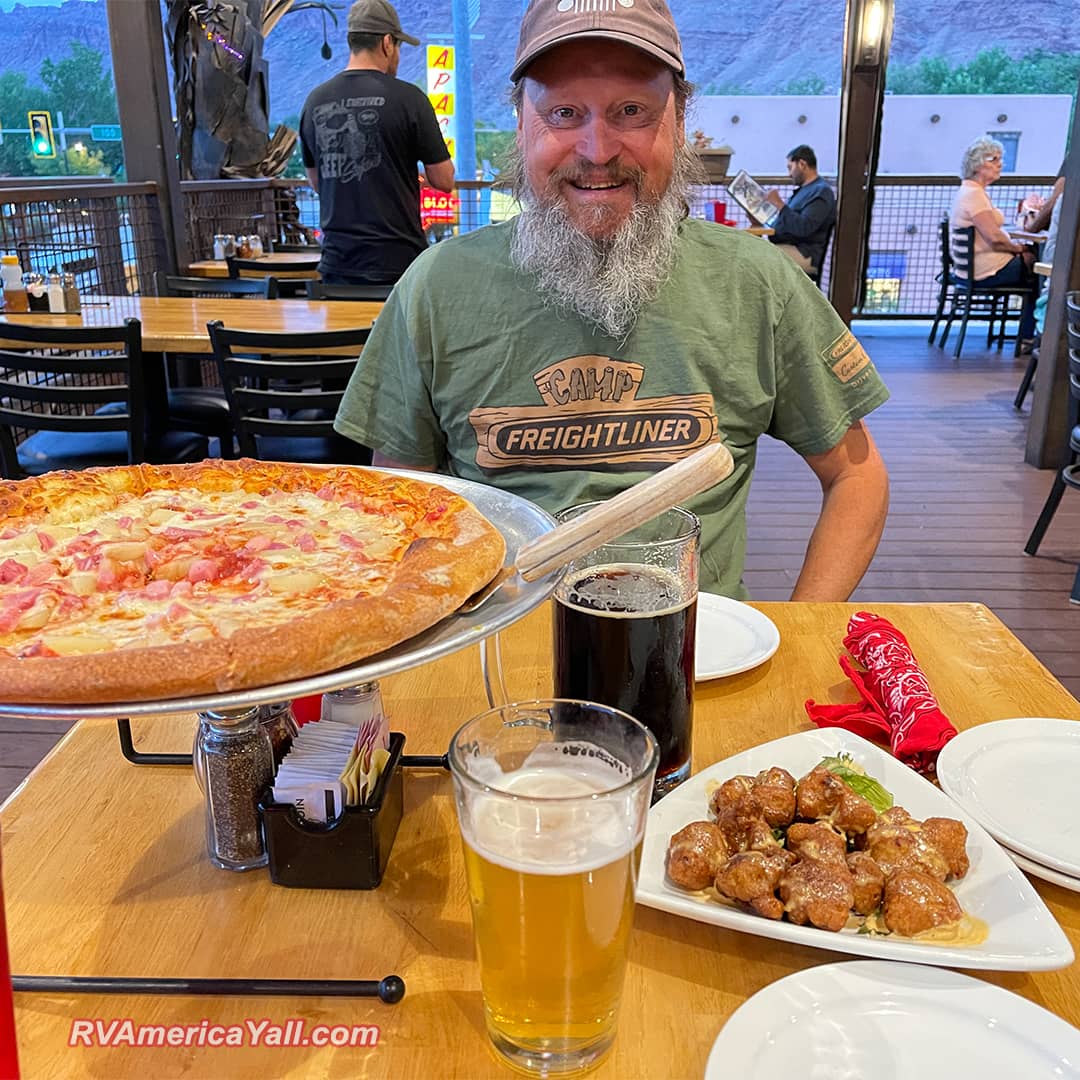
Eating Our Way Through Moab
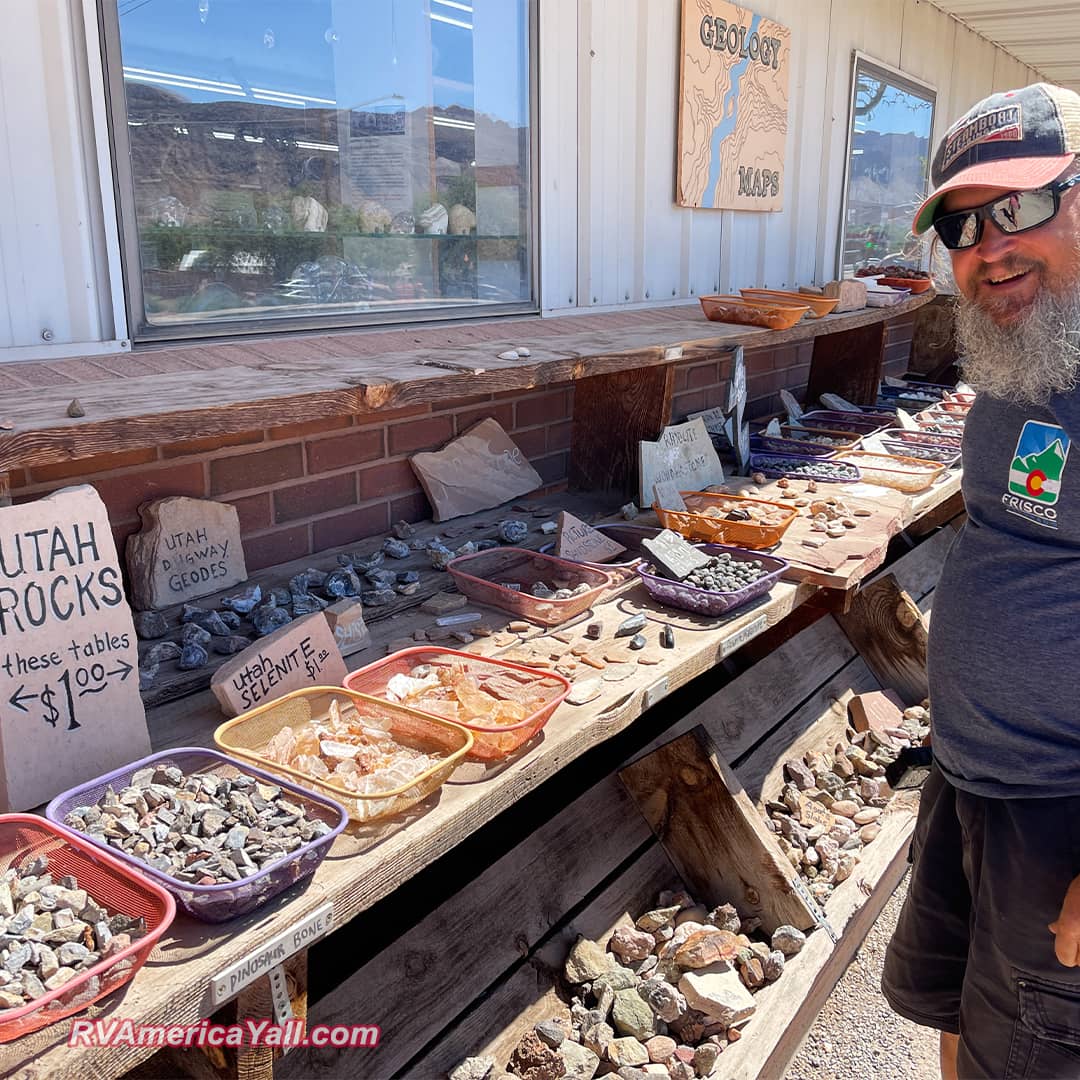
Moab Rock Shop
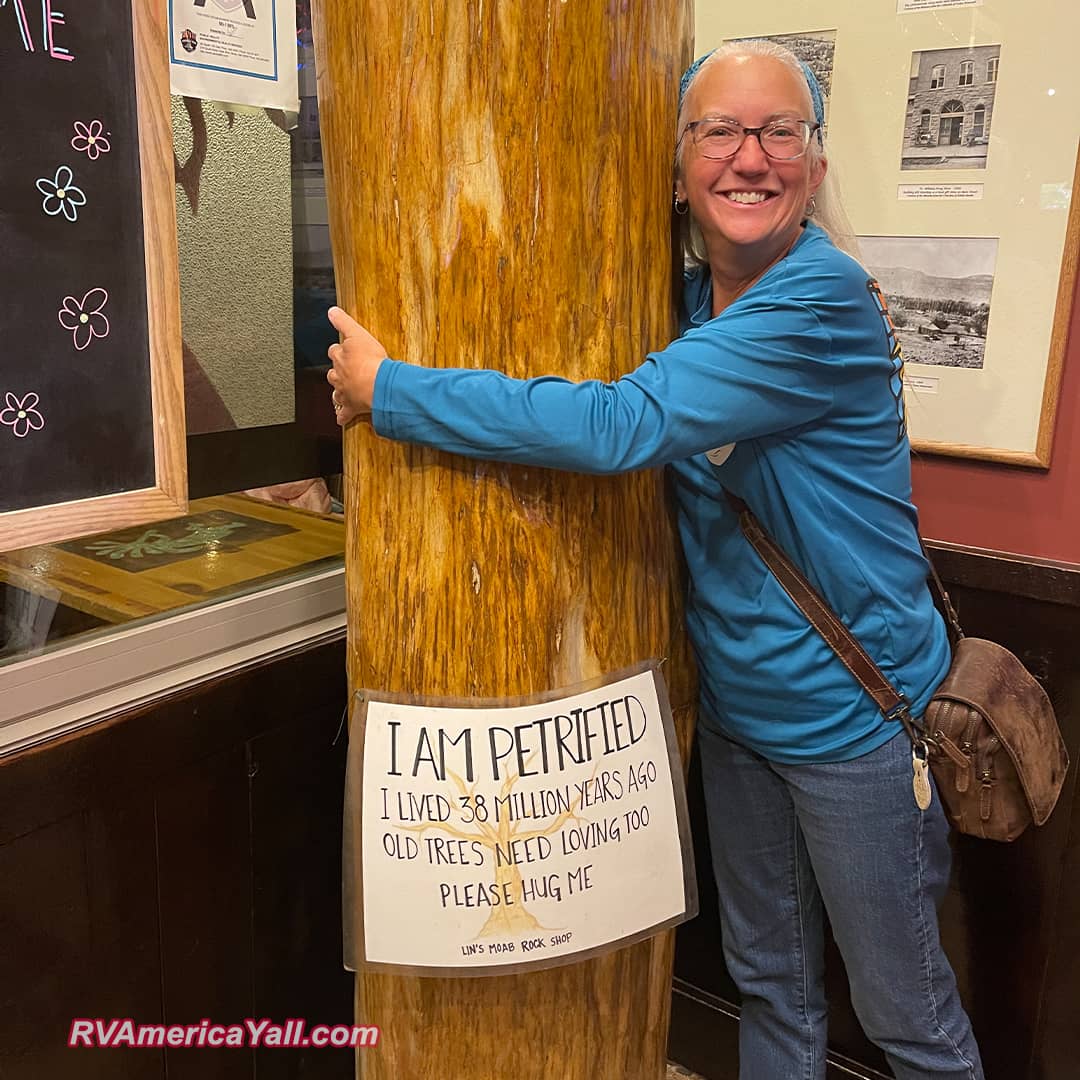
Petrified Tree
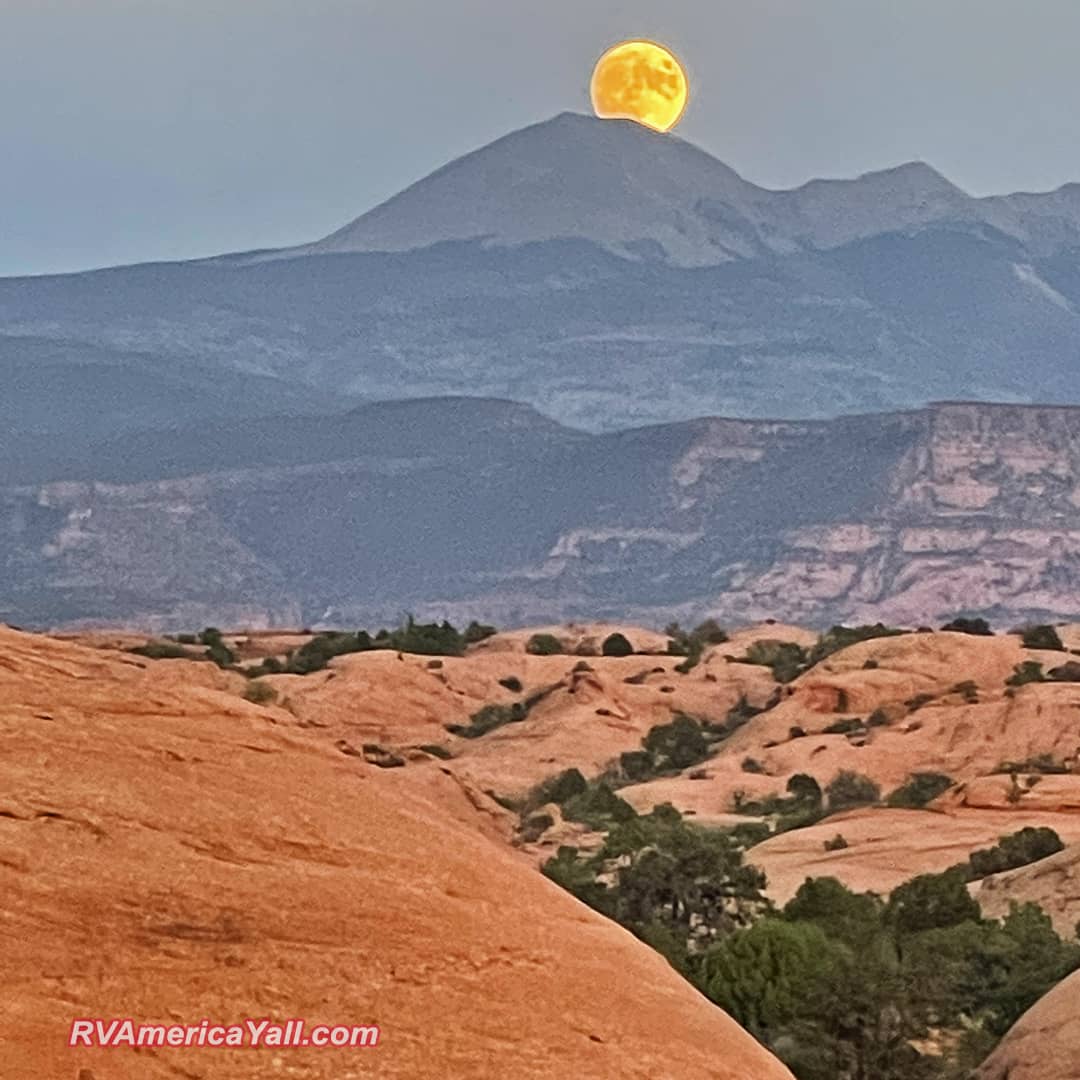
Moon Over Moab
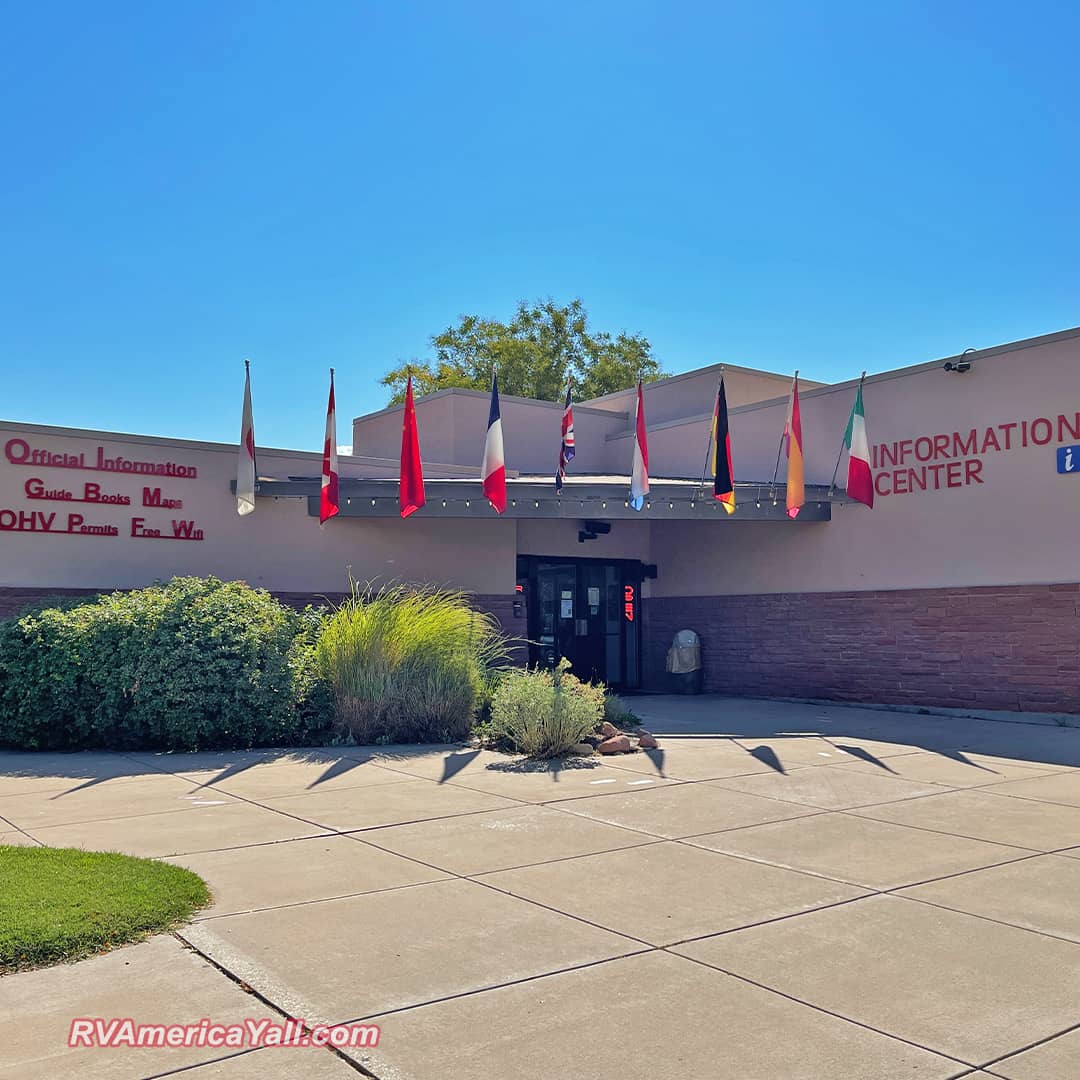
Moab Information Center
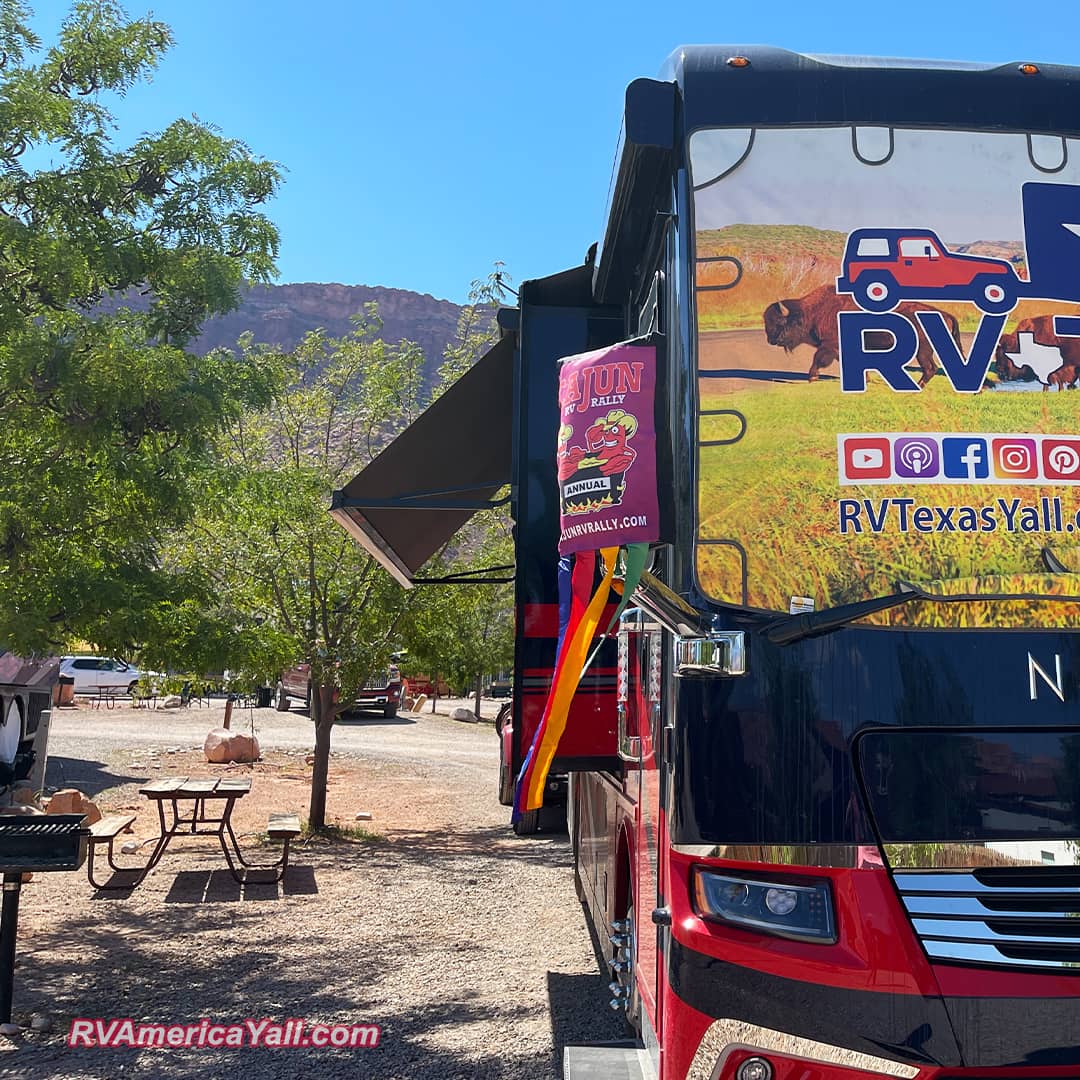
Our Campsite at the Moab KOA
